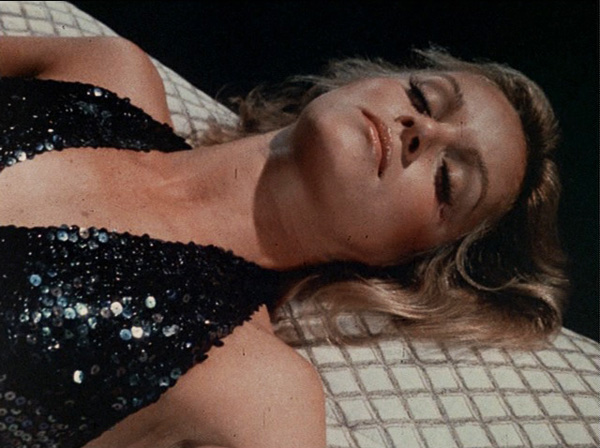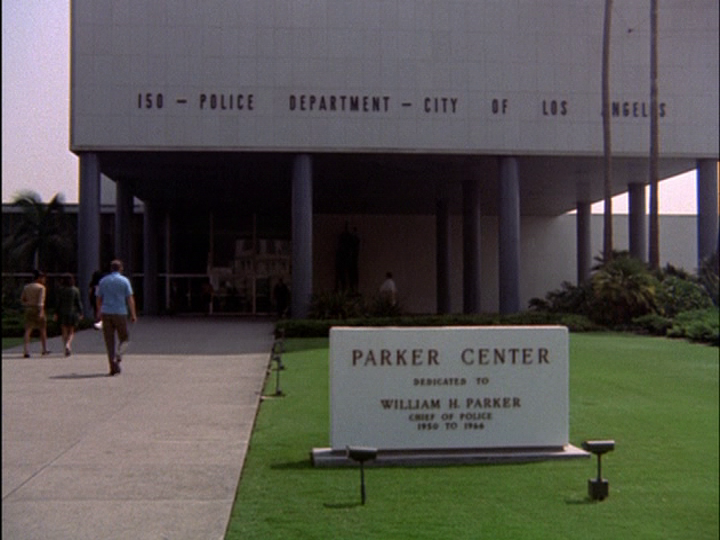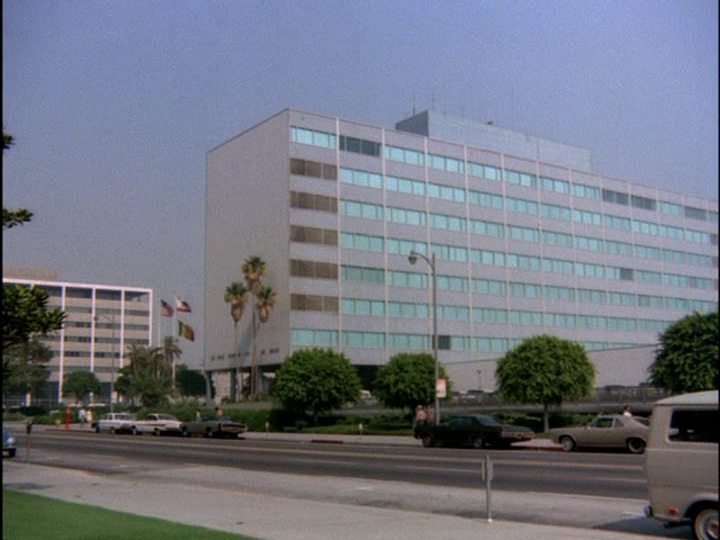
EPISODE QUOTE
“add new quote.”
~ CAPS PERSON, Ep Named!
EPISODE DETAILS
 |
 |
| Original Broadcasting Network: |
National Broadcasting Company |
| Production Studio: | Universal/MCA |
| Episode Production: | 45570 |
| Original Episode Airdate: | Sunday, November 28, 1976 |
| Airtime: | 90 minutes (actually 73 min.) |
| Director: | Noel Black |
Synopsis:
In the episode “A Star is Dead” from the first season of Quincy, M.E., the renowned medical examiner, Dr. Quincy, finds himself entangled in a complex case involving the death of movie star Roberta Rhodes. As the investigation unfolds, Quincy becomes torn between his loyalty toward his friend, Congressman Charles Sinclair, and his pursuit of the truth surrounding Roberta’s demise.
GUEST STARRING/STARRING
- Paul Reardon –
- Role: A journalist who approaches Quincy with crucial information about Congressman Charles Sinclair’s presence with Roberta on the night of her death.
- Congressman Charles Sinclair –
- Role: Quincy’s friend and a prospective senator, who becomes a person of interest in Roberta’s death. Quincy struggles with his loyalty toward Sinclair as he investigates the case.
- Gossip Newspaper Editor –
- Role: An editor who possesses the knowledge and leads Quincy down a path of secrets and half-truths, adding complexity to the investigation.
- Detective Carla Ramirez –
- Role: A dedicated detective who works alongside Lieutenant Monahan in investigating Roberta’s death, providing support and additional perspectives.
RE-OCCURRING CAST
Jack Klugman as Quincy, M.E., Lynette Mettey as Lee (as Lee Potter), Garry Walberg as Lt. Frank Monahan, Val Bisoglio as Danny Tovo, John S. Ragin as Dr. Robert Astin, Robert Ito as Sam Fujiyama, Joseph Roman as Sgt. Brill, the rest of the cast is listed alphabetically: Jerry Doggett as L.A. Dodgers Announcer (voice) (uncredited), Eddie Garrett as Ed – Crime Photographer (uncredited), Don Mantooth as Police Officer (uncredited), James Rosin as Police Officer (uncredited).
- Dr. Quincy (Jack Klugman) – The brilliant and unorthodox medical examiner, determined to uncover the truth.
- Lieutenant Frank Monahan (Garry Walberg) – The LAPD detective who works closely with Quincy on the case.
- Roberta Rhodes (Guest Star) – A famous movie star who is found dead in her bedroom.
- Congressman Charles Sinclair (Guest Star) – Quincy’s friend and a prospective senator, who becomes a person of interest in the case.
- Clara Rhodes (Guest Star) – Roberta’s mother, who discovers her daughter’s lifeless body.
PRELIMINARY FINDINGS: LACC CASE #: 76.10.1035 – NOTES
(Approx )
SUPPLEMENTAL L.A.C.C. CASE NOTES – SUBSEQUENT VICTIMS
Roberta Rhodes and Paul Reardon
ALLEGED PERPETRATOR(S}
Journalist Paul Reardon
EPISODE SYNOPSIS
Overview: Directed by Noel Black, “A Star Is Dead” is an episode from the popular television series Quincy M.E. The episode follows the renowned medical examiner Dr. R. Quincy, played by Jack Klugman, as he investigates the death of Hollywood actress Roberta Rhodes, portrayed by Donna Mills. The case takes a twist when accusations of murder are directed at Congressman Charles Sinclair, played by Robert Foxworth. With the involvement of tabloid newspaper editor Paul Reardon (William Daniels), Quincy’s investigation becomes more complex. This episode offers fans of Quincy M.E. an engaging storyline with unexpected turns and social commentary.
Cast and Characters:
- Jack Klugman delivers a strong performance as Dr. R. Quincy, M.E. His character is known for his dedication to uncovering the truth and his ability to solve intricate cases.
- Lynnette Mettey portrays Lee, Quincy’s girlfriend, who provides support and insights throughout the investigation.
- Garry Walberg impresses as Lt. Frank Monahan, Quincy’s trusted colleague in law enforcement.
- Val Bisoglio brings humor and charm to the role of Danny Tovo, Quincy’s assistant.
- Donna Mills captivates as Roberta Rhodes, the Hollywood actress whose death sets the investigation in motion.
- June Lockhart delivers a poignant performance as Mrs. Clara Rhodes, Roberta’s grieving mother.
- Robert Foxworth portrays Congressman Charles Sinclair, who finds himself accused of murder, adding complexity to the storyline.
- William Daniels adds intrigue as Paul Reardon, the tabloid newspaper editor involved in the case.
Insights and Themes: “A Star Is Dead” explores themes of deception, media manipulation, and the quest for justice. The episode delves into the dark underbelly of Hollywood, shedding light on the tabloid culture prevalent during that era. It raises questions about the price of fame and the impact of media on public perception. The script offers unexpected twists and challenges Quincy’s usual approach, making viewers question the trust he places in his friend, Congressman Sinclair.
The episode benefits from strong guest performances, including William Daniels as the tabloid editor and Donna Mills as the ill-fated actress. Their portrayals, along with the solid ensemble cast, enhance the overall quality of the episode.
Conclusion: In “A Star Is Dead,” Quincy M.E. delivers an intriguing and thought-provoking storyline. Jack Klugman’s portrayal of Dr. Quincy, combined with a compelling script, keeps viewers engaged throughout. The episode tackles complex issues while maintaining the thrilling crime drama that fans of the series enjoy. With unexpected plot twists, social commentary, and strong performances, “A Star Is Dead” is a standout episode within the Quincy M.E. series that showcases the show’s ability to entertain and captivate its audience.
The episode begins with the shocking discovery of Roberta Rhodes’ lifeless body in her bedroom. The police initially suspect suicide due to evidence of a drug overdose, but Quincy remains unconvinced. Despite pressure to close the case, Quincy follows his intuition and begins his own investigation.
As Quincy delves deeper into the circumstances surrounding Roberta’s death, he receives information from Paul Reardon, a journalist, who claims to have proof that Congressman Charles Sinclair was with Roberta on the night she died. Quincy finds it hard to believe that his old friend could be responsible for Roberta’s murder, but he is determined to uncover the truth.
Quincy’s pursuit of justice leads him down a twisted path of lies and half-truths. He encounters conflicting testimonies and inconsistencies that make the case increasingly convoluted. As he digs deeper, Quincy finds himself caught between his professional duty and his personal loyalty to Sinclair.
Quincy’s investigation uncovers a web of secrets and hidden agendas within the glamorous world of Hollywood and politics. He encounters suspicious characters, including the gossip newspaper editor, who possess crucial knowledge that adds complexity to the case. Meanwhile, Detectives Carla Ramirez and Lieutenant Monahan provide additional support and perspectives during the investigation.
Throughout the episode, Quincy grapples with his own doubts about Sinclair’s involvement. He questions whether Sinclair’s repeated lies are attempts to cover up his guilt or if there is another explanation for his behavior. Quincy’s determination to uncover the truth becomes a personal and moral challenge as he tries to reconcile his friendship with Sinclair and his pursuit of justice.
In a climactic revelation, Quincy uncovers a crucial piece of evidence that leads him to the truth behind Roberta’s death. With the puzzle finally coming together, Quincy confronts the real perpetrator and unravels the complex motives that drove them to commit the crime.
In the episode’s resolution, Quincy reconciles his personal conflict and ensures that justice is served. The investigation serves as a reminder of the dark side of fame and the lengths people will go to protect their secrets.
Episode Generic Breakdown by Act:
Act 1: Roberta Rhodes, a famous movie star, is discovered dead in her bedroom. The police initially suspect suicide due to evidence of a drug overdose. However, Quincy, known for his meticulous approach, begins examining the scene and questioning the circumstances surrounding her death. He notices inconsistencies and becomes suspicious, believing there might be more to the story than meets the eye.
Act 2: Quincy receives information from Paul Reardon, a journalist seeking to expose a potential scandal. Reardon claims to have proof that Congressman Charles Sinclair, a close friend of Quincy’s and a prospective senator, was with Roberta on the night she died. Quincy is torn between his loyalty to Sinclair and his commitment to uncovering the truth. He embarks on a personal investigation to validate or refute the journalist’s claims.
Act 3: As Quincy delves deeper into the case, he encounters a web of lies, half-truths, and conflicting testimonies. The gossip newspaper editor becomes a key figure, providing Quincy with valuable leads and information that shed light on the intricate connections between Hollywood and politics. Detectives Carla Ramirez and Lieutenant Monahan work alongside Quincy, offering their perspectives and support during the investigation.
Act 4: Quincy’s doubts about Sinclair’s involvement intensify as he uncovers more evidence and puzzles over the congressman’s repeated lies. He questions whether Sinclair’s deceit is motivated by guilt or if there are other factors at play. The investigation becomes increasingly complex, and Quincy struggles to reconcile his personal connection with Sinclair and his pursuit of justice.
Act 5: In a dramatic turn, Quincy pieces together a crucial breakthrough. He uncovers a hidden motive and identifies the real perpetrator behind Roberta’s murder. With the evidence pointing in a definitive direction, Quincy confronts the individual responsible, exposing their secrets and motives. The revelation brings clarity to the case and validates Quincy’s instincts.
Quincy resolves his internal conflict and ensures that justice is served. He reflects on the dark underbelly of fame and the lengths people will go to protect their reputations and secrets. The episode concludes with Quincy contemplating the moral and personal challenges he faced throughout the investigation, recognizing the importance of upholding the truth, regardless of personal relationships.
In order to provide you with spoilers about the episode “A Star Is Dead,” here are some key plot points that may reveal certain details about the story:
- The episode revolves around the investigation of the death of Hollywood actress Roberta Rhodes, played by Donna Mills.
- As Dr. Quincy digs deeper into the case, he uncovers evidence that suggests Roberta’s death may not have been accidental.
- Congressman Charles Sinclair, portrayed by Robert Foxworth, becomes a prime suspect in the murder investigation.
- Quincy’s investigation is complicated by the involvement of tabloid newspaper editor Paul Reardon, played by William Daniels. Reardon’s agenda adds a layer of complexity to the case.
- Throughout the episode, Quincy faces obstacles and doubts, as he questions his own judgment and struggles to uncover the truth.
- The episode explores the dark side of Hollywood and the tabloid culture that thrives on sensationalism and manipulation.
- Unexpected twists and turns occur as Quincy unravels the mystery, leading to a surprising resolution that reveals the true culprit behind Roberta Rhodes’ death.
Please note that these spoilers may diminish the element of surprise and suspense while watching the episode.
”
Spoilers for this episode include:
- Roberta Rhodes’ death was not a suicide but a murder. The initial suspicion of a drug overdose proves to be inaccurate.
- Quincy’s investigation uncovers evidence suggesting that Congressman Charles Sinclair, Quincy’s friend, and a prospective senator, was indeed with Roberta on the night she died.
- Quincy struggles with his loyalty towards Sinclair as he delves deeper into the case, questioning whether his friend could be involved in the murder.
- Quincy encounters a web of lies, half-truths, and hidden agendas within the realms of Hollywood and politics, making the case increasingly convoluted.
- The gossip newspaper editor possesses crucial knowledge that adds complexity to the investigation and leads Quincy down unexpected paths.
- Ultimately, Quincy uncovers a crucial piece of evidence that points to the true perpetrator of Roberta’s murder.
- The motive behind the murder is revealed, shedding light on the intricate connections and personal agendas at play.
- Quincy confronts the real perpetrator, ensuring that justice is served and bringing closure to the case.
Title: “A Star is Dead” – Uncovering the Twists and Turns in Quincy M.E.
Introduction: “A Star is Dead” is a captivating episode from the classic TV series Quincy M.E. that showcases the show’s ability to deviate from its usual formula and deliver a unique storyline. Released in 1976, this episode stands out for its strong performances, intriguing plot twists, and thought-provoking themes.
Synopsis: The episode begins with Dr. Quincy (Jack Klugman), the astute medical examiner, being summoned to the home of Roberta Rhodes (Donna Mills), a renowned Hollywood actress found dead from an apparent overdose. Quincy initially believes it to be a suicide, but complications arise when Roberta’s mother (June Lockhart) accuses Congressman Charles Sinclair (Robert Foxworth), who had a romantic relationship with the victim, of being involved in her death.
As Quincy investigates further, he faces a conflict of interest as Sinclair is his friend, and he firmly believes in his innocence. However, a tabloid newspaper editor, Paul Reardon (William Daniels), claims that Sinclair was present at Roberta’s home on the night of her death, contradicting Sinclair’s denial.
Review: What sets “A Star is Dead” apart from typical Quincy episodes is the shift in focus from proving a murder to establishing a death as a suicide. This departure from the show’s usual approach adds an exciting twist and keeps viewers engaged throughout.
One of the episode’s strengths lies in its stellar guest performances, which enhance the overall quality of the story. Jack Klugman delivers another exceptional portrayal of Quincy, and the chemistry between him and the supporting cast is evident. Additionally, the return of Lynette Mettey as Quincy’s girlfriend, Lee, adds a welcome dynamic to the episode.
While Quincy’s quick assumption of suicide before uncovering all the facts may seem contrary to his usual approach, it adds a layer of complexity to his character and the narrative. The episode successfully presents a series of twists and turns that keep viewers on their toes, culminating in a surprising plot twist at the very end, leaving audiences satisfied and wanting more.
Conclusion: “A Star is Dead” stands as a remarkable episode in the Quincy M.E. series, showcasing the show’s ability to deviate from its established formula while still delivering a compelling storyline. With its strong performances, intriguing plot twists, and thought-provoking themes, this episode exemplifies the unique charm and appeal of Quincy M.E. It is a must-watch for fans of the series and a testament to its enduring popularity.
Note: Please remember to credit the respective actors and creators involved in the episode when using this review for your blog post.
FILMING LOCATIONS AND EXTERIOR FOOTAGE
Local filming locations in and around Santa Monica Beach, Los Angeles included the City Court House, LA Police Department, and LA Coroner’s Office established for this television series…



TRIVIA
- Additional principal photography from this episode was primarily used for the television series visual montage for series identification and casting credits through the entire seven-year run on NBC-TV!
NIT PICKS
- more to come
PRODUCT PLACEMENTS AND KNOWN SPONSORSHIPS
19r, Mfg time frame: (insert link) Look for it in this episode…
SELECTED SCREENCAPS
PROMOTIONAL ARTIFACTS
pending